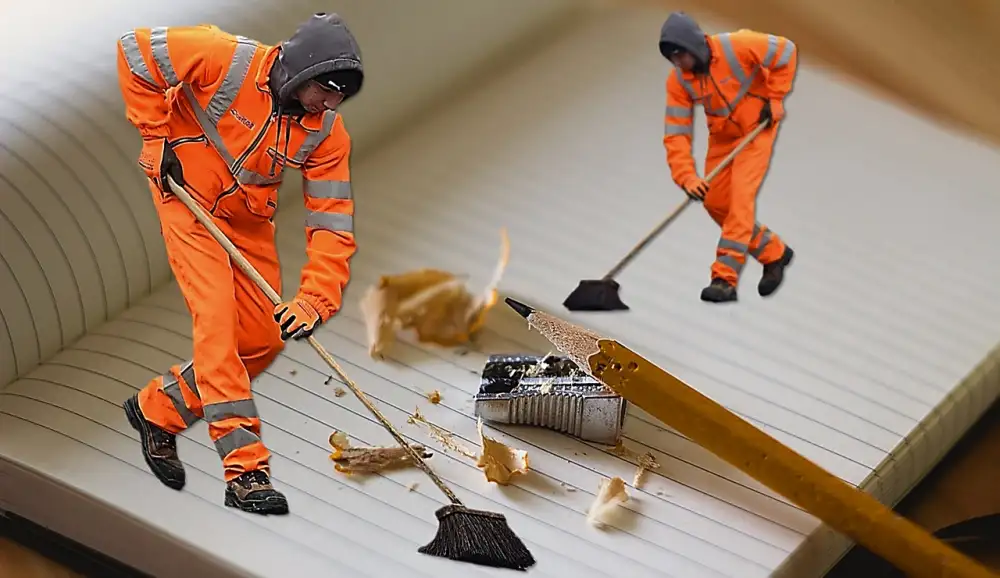Master the Art of Cast Iron Skillet Cleaning: A Step-by-Step Guide for Sparkling Home Cookware

- Importance of proper cleaning for maintaining cast iron skillet
- Step-by-step guide on cleaning a cast iron skillet:
- 1. Gather necessary materials for cleaning
- 2. Remove any food residue from the skillet
- 3. Use hot water and a brush to scrub the skillet
- 4. Dry the skillet thoroughly
- 5. Apply a thin layer of oil to prevent rusting
- Tips for maintaining a seasoned cast iron skillet
- Common mistakes to avoid while cleaning a cast iron skillet
Cast iron skillets have been a staple in kitchens for centuries, known for their durability and ability to retain heat. However, to ensure their longevity and optimal performance, proper cleaning is essential. Cleaning a cast iron skillet may seem like a daunting task, but with the right techniques, it can be a breeze. In this article, we will guide you through the step-by-step process of cleaning your cast iron skillet, from gathering the necessary materials to maintaining its seasoned surface. By mastering the art of cast iron skillet cleaning, you'll be able to enjoy delicious meals cooked in sparkling cookware for years to come.
Importance of proper cleaning for maintaining cast iron skillet
Proper cleaning is crucial for maintaining the longevity and performance of your cast iron skillet. A well-maintained skillet not only ensures delicious and evenly cooked meals but also prevents rusting and extends its lifespan. Neglecting regular cleaning can lead to the buildup of food residue, which can affect the flavor of your dishes and create a breeding ground for bacteria. Additionally, a dirty skillet can hinder heat distribution, resulting in uneven cooking. By following the correct cleaning techniques, you can preserve the seasoning of your cast iron skillet, ensuring it remains non-stick and ready to use for years to come.
Step-by-step guide on cleaning a cast iron skillet:
3.1. Gather necessary materials for cleaning: Before starting the cleaning process, gather the required materials such as a stiff brush or sponge, hot water, mild dish soap (optional), and a clean towel.
3.2. Remove any food residue from the skillet: Using a spatula or scraper, gently remove any leftover food particles from the skillet. Avoid using metal utensils that may scratch the surface.
3.3. Use hot water and a brush to scrub the skillet: Rinse the skillet with hot water to loosen any remaining food debris. Gently scrub the surface using a stiff brush or sponge to remove any stuck-on residue. Avoid using harsh abrasives or steel wool that can damage the seasoning.
3.4. Dry the skillet thoroughly: After washing, dry the skillet completely using a clean towel or by placing it over low heat on the stove until all moisture evaporates. Ensuring it is fully dry prevents rusting.
3.5 Apply a thin layer of oil to prevent rusting: Once dry, apply a thin layer of cooking oil or vegetable shortening to all surfaces of the skillet, including the handle and exterior. This helps maintain its seasoning and prevents rusting during storage.
By following these steps regularly after each use, you can keep your cast iron skillet clean and in excellent condition for years to come
1. Gather necessary materials for cleaning
Before you begin the process of cleaning your cast iron skillet, it is important to gather all the necessary materials. This will ensure that you have everything you need within reach and make the cleaning process more efficient. The materials you will need include a stiff brush or sponge, hot water, mild dish soap (optional), paper towels or a clean cloth, and a suitable oil for seasoning the skillet. Having these materials ready will help you tackle the cleaning process with ease and achieve sparkling results.
2. Remove any food residue from the skillet
To remove any food residue from the cast iron skillet, start by allowing it to cool down completely. Using a stiff brush or a plastic scraper, gently scrape off any stuck-on food particles. Avoid using metal utensils or abrasive scrubbers as they can damage the seasoning. If the residue is stubborn, add a small amount of water to the skillet and bring it to a simmer. This will help loosen the food debris. Once loosened, continue scrubbing with the brush until all residue is removed.
3. Use hot water and a brush to scrub the skillet
To clean a cast iron skillet, start by using hot water and a brush to scrub away any food residue. The hot water helps to loosen the stuck-on bits of food, making them easier to remove. Avoid using soap as it can strip away the skillet's seasoning. Instead, focus on using the brush to gently scrub the surface of the skillet, paying extra attention to any stubborn spots. The bristles of the brush will help to dislodge any remaining food particles without damaging the skillet's surface. Rinse the skillet thoroughly with hot water after scrubbing to remove any loosened debris.
4. Dry the skillet thoroughly
After scrubbing the cast iron skillet with hot water and a brush, it is crucial to dry it thoroughly. This step is essential to prevent any moisture from causing rust on the skillet's surface. Leaving the skillet wet can lead to corrosion and damage over time.
To dry the skillet, use a clean cloth or paper towel to remove any excess moisture. Make sure to wipe both the inside and outside of the skillet. It is important to note that air drying is not recommended as it can leave behind moisture.
Once you have removed all visible moisture, place the skillet on a stovetop burner set to low heat. Allow the residual heat to evaporate any remaining moisture for a few minutes. This step ensures that every last bit of water is eliminated.
Alternatively, you can also place the skillet in an oven set at a low temperature (around 200°F or 93°C) for about 10-15 minutes. The gentle heat will help evaporate any lingering moisture.
Remember, thorough drying is crucial for maintaining your cast iron skillet's integrity and preventing rust formation. By taking this extra step, you are ensuring that your skillet remains in excellent condition for years to come.
5. Apply a thin layer of oil to prevent rusting
To prevent rusting and maintain the longevity of your cast iron skillet, it is essential to apply a thin layer of oil after each cleaning. This step creates a protective barrier that prevents moisture from coming into direct contact with the iron surface, which can lead to rust formation. The oil also helps in maintaining the skillet's non-stick properties and enhances its seasoning. After drying the skillet thoroughly, use a paper towel or cloth to apply a small amount of vegetable oil or any high smoke point oil evenly on the entire surface, including the handle. Make sure to wipe off any excess oil to avoid sticky residue. This simple yet crucial step will keep your cast iron skillet in excellent condition for years to come.
Tips for maintaining a seasoned cast iron skillet
1. Avoid using soap: Soap can strip away the seasoning on your cast iron skillet. Instead, use hot water and a brush to clean it.
2. Dry thoroughly: After washing your skillet, make sure to dry it thoroughly to prevent any moisture from causing rust.
3. Apply oil after each use: To maintain the seasoning on your skillet, apply a thin layer of oil after each use. This helps to keep it well-seasoned and prevents rusting.
4. Store properly: Store your cast iron skillet in a dry place to avoid moisture buildup. You can also place a paper towel or cloth inside the skillet to absorb any excess moisture.
5. Avoid acidic foods: Acidic foods like tomatoes or citrus can break down the seasoning on your skillet. It's best to avoid cooking such foods in your cast iron skillet or use a well-seasoned one specifically for these ingredients.
By following these tips, you can ensure that your seasoned cast iron skillet remains in great condition for years to come, providing you with delicious meals and lasting memories in the kitchen.
Common mistakes to avoid while cleaning a cast iron skillet
1. Using soap: One common mistake is using soap to clean a cast iron skillet. Soap can strip away the seasoning and leave the skillet vulnerable to rusting. Instead, stick to using hot water and a brush or scraper.
2. Soaking for too long: Another mistake is soaking the skillet for an extended period of time. While it may seem like a good idea to let it soak to loosen stubborn food particles, prolonged exposure to water can lead to rusting. It's best to clean the skillet immediately after use.
3. Using abrasive materials: Avoid using abrasive materials such as steel wool or harsh scrub brushes on your cast iron skillet. These can scratch the surface and remove the seasoning. Opt for softer brushes or sponges instead.
4. Not drying thoroughly: Failing to dry the skillet properly after washing can result in rust formation. Ensure that you dry it thoroughly with a clean towel or by placing it over low heat on the stovetop until all moisture has evaporated.
5. Skipping oiling step: Neglecting to apply a thin layer of oil after cleaning can leave your cast iron skillet susceptible to rusting. The oil acts as a protective barrier against moisture, so make sure to coat the entire surface before storing.
By avoiding these common mistakes, you can ensure that your cast iron skillet remains in excellent condition and continues to provide you with delicious meals for years to come.
In conclusion, mastering the art of cast iron skillet cleaning is essential for maintaining this versatile kitchen tool. By following the step-by-step guide outlined above, you can ensure that your cast iron skillet remains in pristine condition for years to come.
A clean and well-maintained cast iron skillet offers numerous benefits. Firstly, it enhances the flavor of your dishes by preventing any residual flavors from previous meals. This allows you to fully enjoy the natural taste of your food.
Secondly, a properly cleaned skillet promotes even heat distribution, resulting in perfectly cooked meals every time. The smooth surface achieved through regular cleaning prevents hot spots and ensures consistent cooking throughout.
Furthermore, a well-maintained cast iron skillet is more durable and less prone to rusting. The application of a thin layer of oil after each use acts as a protective barrier against moisture, preventing rust formation and extending the lifespan of your skillet.
Lastly, cleaning your cast iron skillet regularly helps to preserve its seasoning. The build-up of layers over time creates a non-stick surface that improves with each use. This makes cooking and cleaning easier while adding depth and richness to your recipes.
By investing time in proper cleaning techniques and maintenance, you can reap these benefits and continue creating delicious meals with confidence using your beloved cast iron skillet. So go ahead, embrace the joy of cooking with a sparkling clean and well-cared-for kitchen companion!
Published: 25. 02. 2024
Category: Home



